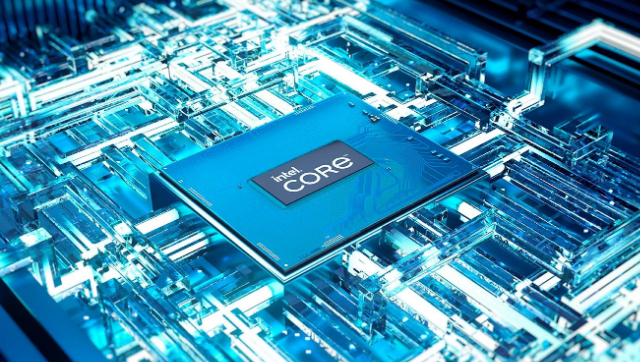Intel has unveiled initial details about its upcoming platform, Meteor Lake, which is set to launch later this year with a strong emphasis on enhancing AI performance for clients. Given the current prominence of AI in computing, Intel is making significant investments to ensure that client devices can deliver proficient AI experiences without solely relying on cloud resources for emerging workloads and use cases. The competition to release the most superior AI-focussed processor is fiercer than ever before, and Meteor Lake marks a turning point for Intel. By adopting a fresh approach to CPU design, Meteor Lake has the potential to ignite Intel’s resurgence as it engages in a heated battle with AMD, NVIDIA and now, even Apple. A New Generation: Meteor Lake CPUs Meteor Lake represents Intel’s next-generation CPUs, characterized by their utilization of the Intel 4 process and incorporation of Intel’s Foveros packaging technology in a chiplet-style layout. This innovative design entails the separation of various processor components into distinct tiles or chiplets, enabling advanced power management and the ability to target each tile for specific workloads. Among these chiplets, the CPU retains the hybrid architecture observed in the 12th-gen and 13th-gen processors, with a strong emphasis on power efficiency. Additionally, Intel introduces a brand-new GPU that integrates Arc graphics, including support for cutting-edge features like ray tracing and XeSS, all within a low-power design. However, Intel’s primary focus lies in the newly integrated AI engine, known as the VPU (vision processing unit). This component is poised to propel client-side AI workloads forward by significantly reducing the computational demands of AI inferencing. New Motherboards For Meteor Lake CPUs Leaks have surfaced regarding the socket details for Intel’s 14th Gen desktop CPUs. Previously, the LGA1700 socket was utilized for the 12th Gen Alder Lake and 13th Gen Raptor Lake desktop CPUs. There has been speculation about whether this socket will be supported in the next generation of CPUs as well. It appears that the Intel 14th-Gen Meteor Lake CPU will not be compatible with a 13th-Gen Z790 motherboard. Reports suggest that Intel will introduce a new socket called LGA 1851 for the upcoming desktop CPUs. Alongside the new socket, Intel is expected to release the Z890 motherboard chipset, which is rumoured to include native PCI-e 5.0 implementation for M.2 NVMe SSDs. This suggests that a larger percentage of Intel’s Z890 motherboards will support Gen 5 NVMe SSDs compared to older generations. The leaked information suggests that the new LGA 1851 socket is similar in size to the older LGA 1700 socket, implying that cooler compatibility should remain consistent between the two sockets. It remains uncertain whether the rumoured Raptor Lake ‘refresh’ will fall under the 13th Gen or 14th Gen branding and which socket it will utilize, either LGA 1700 or LGA 1851. There have been speculations that the new socket will support three processor generations from Intel. Additionally, if the rumoured Raptor Lake S Refresh is released on LGA 1700 and is supported on previous-gen Z790 motherboards and others, it would indicate that Intel has utilized the LGA 1700 socket for three different processor generations. Intel’s big bet on AI - VPUs or Visual Processing Units Typically, most AI workloads are handled in the cloud, which can result in increased costs for software vendors as these tools become more advanced and demanding in terms of computing resources. There are also privacy concerns for users. With the integration of AI in features like Windows Copilot, Intel recognizes the need to embrace this technology fully. This is where the VPU or vision processing unit in the Meteor Lake platform plays a crucial role. This specialized processor is specifically designed to handle AI workloads with greater efficiency than a general-purpose CPU or even a proper, hardcore GPU. What are VPUs going to be used for? VPUs enables these workloads to be processed locally on a desktop or laptop. The VPU is optimized for sustained AI tasks such as applying effects like background blur, while the GPU can be utilized for AI integrated into rendering pipelines, and the CPU can handle lightweight tasks. All of these components can be leveraged simultaneously for workloads that can benefit from the unique strengths of each. Intel provided an example of running Stable Diffusion image generation in GIMP on the Meteor Lake platform. In this scenario, the system generated a complex image based on a text prompt, and used the CPU, GPU, and VPU, together. This process took approximately 20 seconds. Additionally, a Super Resolution tool can be applied exclusively on the VPU, providing a higher-resolution version of the image in just a few seconds. The enhanced efficiency and performance of the VPU also improve effects like background blur, delivering improved edge detection while consuming less power. Read all the Latest News , Trending News , Cricket News , Bollywood News , India News and Entertainment News here. Follow us on Facebook , Twitter and Instagram .
Intel's AI Gambit: How the chip maker plans to go all in on AI, seed AI-processors in every PC
Mehul Reuben Das
• May 31, 2023, 10:29:47 IST
The race to release the most superior AI-focussed processor is fiercer than ever before. Meteor Lake will be turning point for Intel thanks to a fresh new approach to CPU design. Intel envisions a future where every PC will have an AI-processor at the local level
Advertisement
)
End of Article